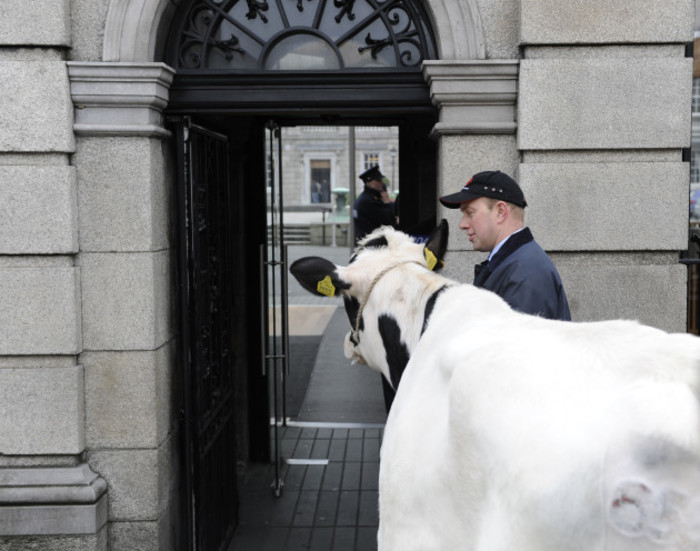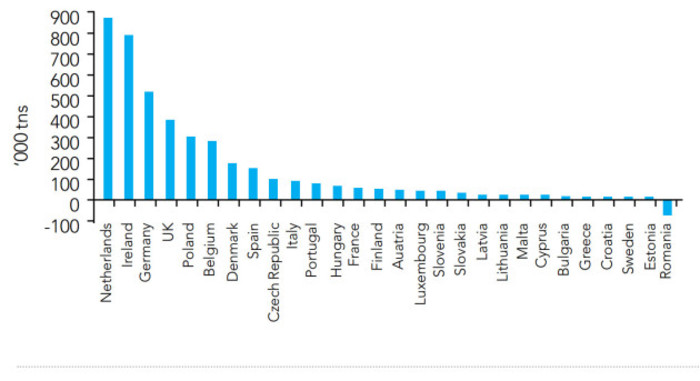We need to talk about the price of milk and its effect on rural Ireland
The dairy industry has reached a ‘critical point’, according to producers.
DAIRY FARMERS HIT with the perfect storm of a global milk glut and flagging demand could be forgiven for thinking they would feature prominently in the government’s plans for the next five years.
However the sector barely rated a mention in the new programme for government, published last week, as prices of the commodity continue to flatline.
The price of milk has plummeted from roughly 36 cent per litre to around 20 cent per litre over the past two years and Irish Creamery Milk Suppliers Association (ICMSA) president John Comer said the industry had reached “a critical point”.
“I’m worried even if prices started to recover next year, it would be too late for many dairy farmers with a lot of debt,” he said.
“Unless there are interventions from the government and the EU, milk farmers in Ireland will go bankrupt.”

Plans for the future
The government programme acknowledges the volatility in the sector and commits to putting pressure on the EU to respond to the challenges for dairy farmers.
But it contains no specific measures for supporting suppliers who are currently producing milk at a greater cost than it is worth.
At the moment it costs 28 cent to produce each litre of milk and farmers receive around 20.4 cent per litre from buyers, according the ICMSA.
Prices have plunged through a combination of higher global production, exacerbated when EU milk quotas were dropped last year, and lower demand.
The appetite for milk has dried up since sanctions were imposed on Russia in the wake of the country’s activity in Ukraine, leaving farmers with fewer major markets to sell into.
China has also disappointed as the driver of milk export growth with the country now reportedly stockpiling powdered milk products as the worldwide supply glut continues.
According to figures from the ICMSA, the dairy crisis has cost Irish farmers €600 million in income and cost the rural economy an estimated €1 billion through the flow-on effect of the lost revenues.
 Volume change in EU milk production in 2015
Volume change in EU milk production in 2015
Click here for a larger version
Teagasc said in its 2016 farming outlook that net margins for dairy enterprises were down 50% per litre last year on the 2015 figures, although it expected a 25% recovery this year. Irish milk production increased 10% last year and is predicted to rise another 7% in 2016.
Recognition
For his part, Comer said he would like to see some recognition from the government about what had caused the dairy crisis.
“It needs to be acknowledged that it is the volumes of milk that is causing the problem. The difference between the 2009 crisis and what we’re facing now is that this time around it’s the European milk that’s causing the problem, not New Zealand milk.
“It’s the extra volumes that have collapsed the price and there needs to be an incentive to farmers to take out about 4% to 5% of the European production.”
He said he doesn’t want to see farmers penalised for overproducing and instead wants to see dairy farmers receive funding to help them sustain their business until the milk markets stabilise.
“This can be funded by the €400 million that is available in the crisis reserve and external funds.”
“The external funds can be justified on the basis that it was a political decision that led to the sanctions being imposed on Russian. It’s only the farmers that are carrying the cost of that political decision.”





